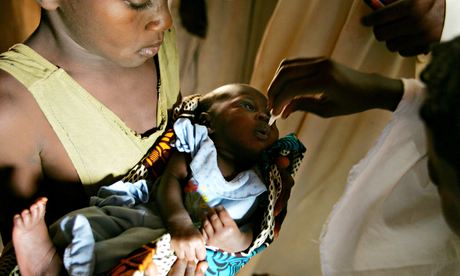
When it comes to immunisation, data collection is often a weak point for humanitarian organisations. Providing actual assistance always seems more important than tracking or monitoring the activities carried out.
However, without reliable, easy-to-access and actionable data on the coverage of effective immunisation campaigns, and barriers to them, those who want to improve immunisation coverage are left working with limited and often anecdotal information.
This is particularly true in the wild polio virus importation belt, a band of countries stretching from west to east Africa. These countries are vulnerable to re-infection from the imported polio virus because vaccination coverage is so low there, often failing to reach people living in remote and scattered settlements, as well as nomadic populations.
South Sudan is one of those countries. It has one of the lowest levels of immunisation in the world – only 2% of children are fully vaccinated, and only 21% receive a measles injection before their first birthday. In South Sudan, as in many other countries in the Horn of Africa, access to remote areas is a challenge. This represents a major impediment to routine vaccination rounds.
Red Cross volunteers from these remote communities are essential in expanding access to care, disseminating health information, and providing essential prevention and follow-up services. For immunisation services, volunteers also play a critical role in engaging parents in vaccination campaigns.
In South Sudan, frontline Red Cross volunteers are doing much more than just mobilising people to get vaccinated. With support from the International Federation of Red Cross and Red Crescent Societies (IFRC), they are mapping the families in their neighbourhoods, identifying babies who need to be vaccinated, and reporting back to health authorities for planning needs.
Last year, the South Sudan Red Cross successfully implemented a new survey approach, using mobile phones to help map areas previously missed by polio vaccinations. Successful immunisation campaigns require complete, accurate and reliable information on how many children remain eligible for vaccination in each specific location so they can be covered in future immunisation rounds. This innovative approach is helping to ensure that no areas are missed.
During the two national rounds of emergency immunisation in South Sudan in 2013, almost 850 Red Cross volunteers were mobilised in the three states of Greater Equatoria to help bring the polio message to the doorstep of more than 250,000 families. Simultaneously, trained volunteers conducted household surveys to map immunisation coverage and identify areas not included in previous vaccination campaigns.
Combining volunteers' door-to-door work with real-time data collection and mapping has been a resounding success. Data on the people reached (and missed) before and after the campaign, reasons for refusal and household information are invaluable and can give immediate ifeedback on campaign progress and coverage to inform timely decision-making during immunisation campaigns.
Data collected in South Sudan has been shared with health authorities, detailing the exact location of missed households through the use of GPS, and indicating the number still eligible for vaccination. Data showed the key role played by volunteers in mobilising parents to adhere to the campaign: over 94% of children under five were immunised, up from 84% before the 2013 campaign.
The Red Cross and Red Crescent's unique network of trusted community-based volunteers gives it a great advantage in collecting this data that is often not afforded to other humanitarian actors.
But adopting a new technology also brings challenges. The technology is always changing in both capacity and cost, which makes it difficult to develop guidance, training and budgeting. Competition among software providers is rife, and it can be difficult to determine which option is best suited for particular organisational and contextual needs.
The IFRC has long recognised the potential for digital data collection and has been working with partners since 2011 to design an innovative approach to improve the quality and timeliness of the entire data-collection cycle. The Rapid mobile phone-based (Ramp) survey approach enables volunteers from the community to upload information from their phone to the internet immediately, allowing managers to analyse it and respond to needs. This enables real-time disease surveillance and data management, even during emergencies.
Mobile technologies, particularly mobile phones, should be considered as an essential tool for public health workers, including frontline health volunteers. Using these technologies, community health volunteers become more informed, empowered, and independent as they gather, collate and transmit data. They learn to connect with each other and can leverage health technologies to better link the community to the public system, and to strengthen bonds within communities themselves.
As these examples show, the development of technology-oriented approaches to humanitarian action, combined with extensive work with frontline health volunteers, is essential to improve equitable access to health services.
Dr Stefan Seebacher is the head of the health department at the International Federation of Red Cross and Red Crescent Societies. He tweets as @StefanSeebacher
Join the community of global development professionals and experts. Become a GDPN member to get more stories like this direct to your inbox

